Whether it’s one of the many varieties of salad dressings, marinades, sauces, mustards, dips and mayonnaise, here is our A-Z of dressings and sauces.
Dictionary of Dressings & Sauces
Mayonnaise & Dressings
Salad dressings have a long and colorful history, dating back to ancient times. The Babylonians used oil and vinegar for dressing greens nearly 2,000 years ago. Egyptians favored a salad dressed with oil, vinegar and Asian spices. Mayonnaise is said to have made its debut at a French Nobleman’s table over 200 years ago. Read more.
Mayonnaise *
A smooth, creamy, semi-solid emulsified dressing consisting of vegetable oil (65%) and eggs, acidified with vinegar or lemon juice and delicately spiced. No other emulsifiers are allowed in this product. Often used as a base for other dressings. Interested in different flavors of mayonnaise?

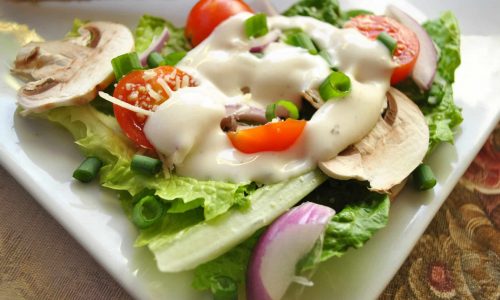
Salad Dressing * (Mayonnaise-type)
Much like mayonnaise in appearance, but with a cooked base. Salad dressing contains a minimum of 30% vegetable oil, 4% egg yolk ingredient, vinegar or lemon juice, and spices. The taste is more piquant than mayonnaise and also is often used as a base for other salad dressings.
Blue Cheese / Roquefort
Blue and/or Roquefort cheese is added in crumbles, chunks or granulated form to a creamy base. Other optional ingredients may include Worcestershire sauce, spices, sweeteners, vinegar, salt and pepper, resulting in a sharp, pungent salad dressing with a rich thick consistency.
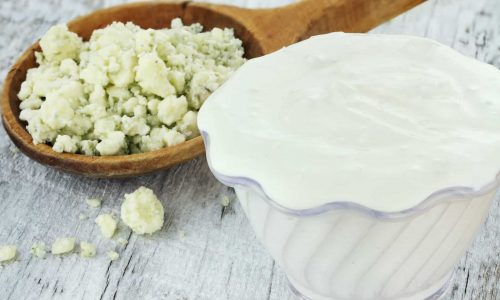

Buttermilk
A creamy, mildly seasoned salad dressing with a buttermilk base. It has a smooth, thick consistency and is often the basis for “house salad dressings”. Many varieties are available, such as bacon, chive, onion, etc. Occasionally sour cream is added.
Caesar
Oil and vinegar seasoned with Romano cheese and garlic, often with the added distinctive flavoring of anchovy.
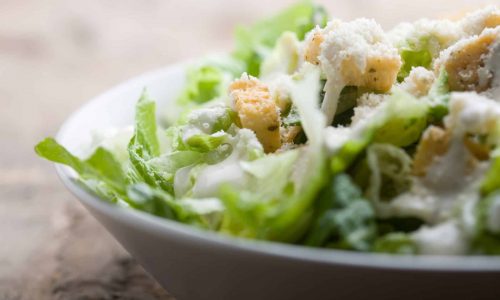
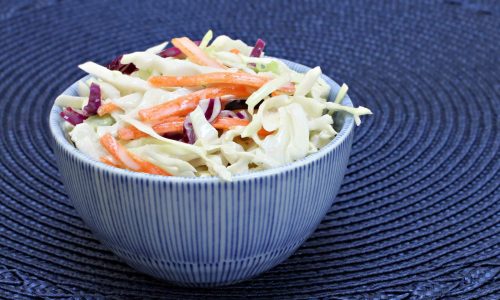
Cole Slaw
Sweeteners and mild spices give this creamy, pourable salad dressing a “sweet/tart” taste. This salad dressing absorbs excess moisture from slaw without thinning.
Creamy Cucumber
A smooth, creamy combination of oil, vinegar, and sour cream flavored with cucumber juice, onion, and black pepper.
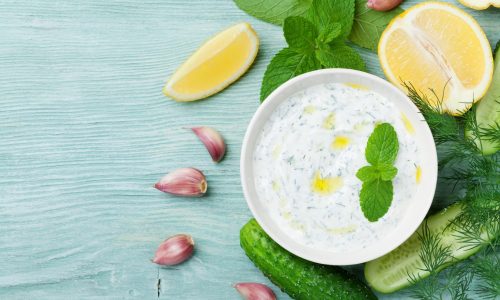

French * (Separating)
Tangy, zesty and spicy, flavored by tomato and/or paprika products added to oil (35% minimum) and vinegar.
French * (Non-separating)
The creamy French differs from the separating French primarily in its thicker consistency and slightly sweeter taste.
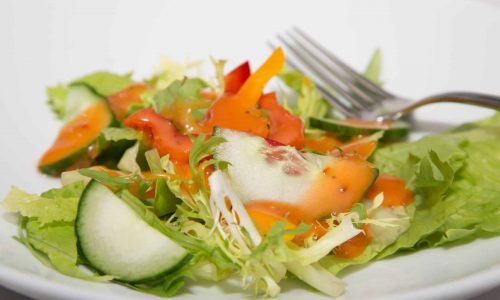
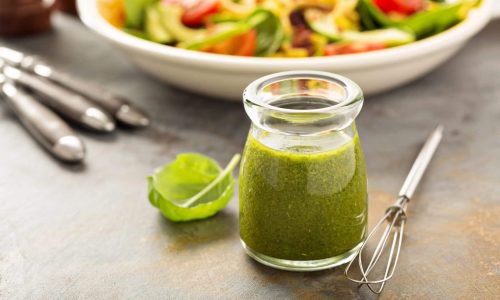
Green Goddess
A thick, creamy pourable salad dressing flavored with anchovy and herbs such as tarragon, garlic and chives.
Italian (Separating)
Red pepper, garlic and other optional ingredients usually associated with Italian dishes (such as oregano, Parmesan cheese, etc.) are added to vinegar and oil, resulting in a zesty, tangy flavor with an easily pourable consistency.
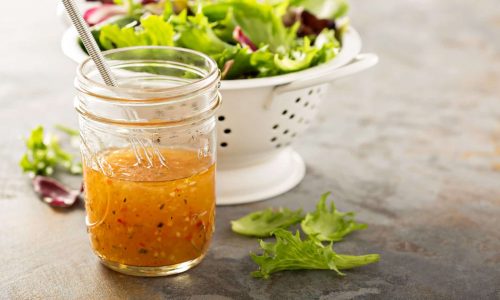
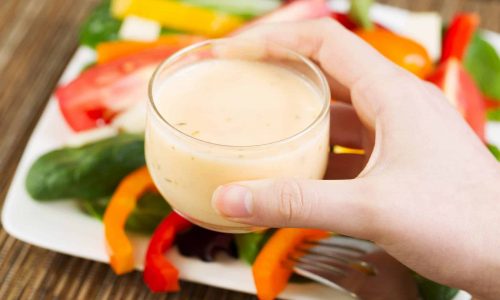
Italian (Non-separating)
Creamy Italian utilizes the same flavoring as the separating Italian but is of thicker consistency.
Oil and Vinegar
Contains the “natural” flavors of vegetable oil and a mellow vinegar. Subtly seasoned with herbs.

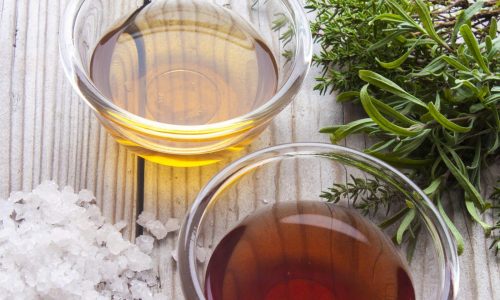
Red Wine Vinegar and Oil
Has the full-bodied flavor of red wine vinegar combined with oil and herb seasonings.
Russian
Thick, but pourable consistency derived from a combination of vinegar, oil, and tomato with optional flavorings such as honey, steak sauce or chili sauce, for a heavy, sweet-tasting salad dressing.
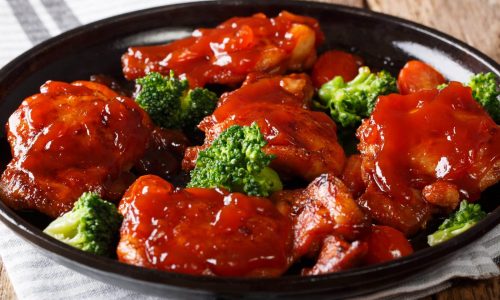
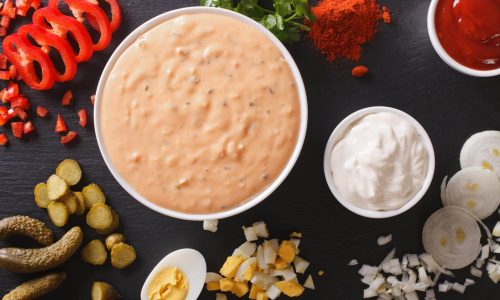
Thousand Island
Pickle relish and other optional flavorings such as pimiento, paprika, chopped egg, onion, garlic, tomato products or chili sauce are added to a creamy base. Thousand Island salad dressing is thick and sweet-tasting, as opposed to tart and spicy.
Reduced Calorie Salad Dressings
Come in many of the flavors and types listed above but contain at least one third less calories than their unaltered counterparts. Low calorie products contain no more than 40 calories per reference amount (2 Tablespoons). Reduced calorie foods contain 25% fewer calories than regular salad dressings per serving.

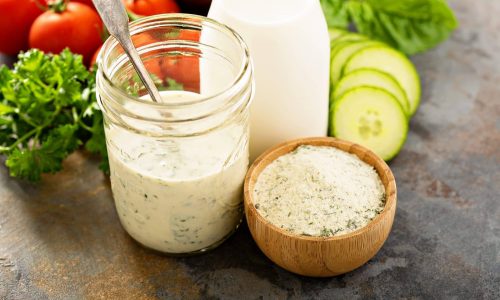
Dry Mixes
Also come in many flavors and are prepared by mixing with vegetable oil, mayonnaise, sour cream, buttermilk or other base ingredients, as the package directs. Are also useful as seasonings in dips, casseroles, etc.
Mustards
Like many food products, there seems to be a variety of stories relative to the origination of mustard. The name “mustard” is derived from a Latin word “must” which was an unfermented grape wine made potent and fiery with the addition of ground mustard seed. Read more.
Dijon-Style Mustard
A smooth blend including brown mustard seed, vinegar and other acidulants, water, white wine, and seasonings such as salt and tarragon. Characteristic of Dijon-style mustard is a smooth appearance resulting from the removal of the mustard bran by passing the product through a screening device, and a pungent flavor from the brown seed.
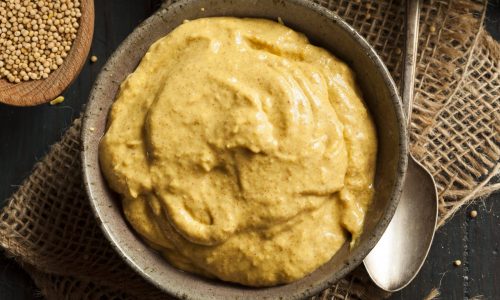

Hot Mustard
Sharp-flavored mustard seeds (brown or oriental) are added to vinegar, water and other seasonings such as allspice, tarragon or shallots. Chinese, English and some German varieties fall into this category with tastes ranging from sharply pungent to very hot.
Yellow Mustard (Prepared mustard)
A smooth paste of yellow mustard seed, (mildest of all mustard varieties) vinegar, water, tumeric, and seasonings such as salt, clove and coriander.
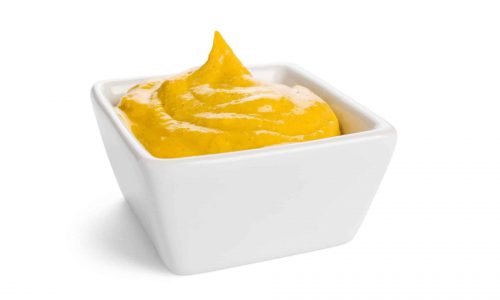
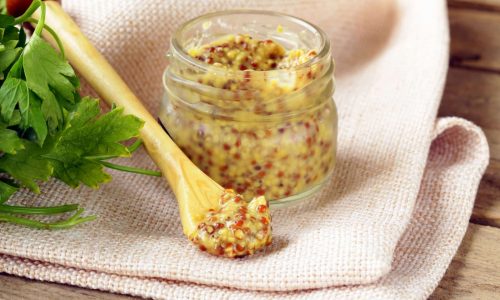
Coarse-Ground Mustard (Country style, brown, old fashioned)
A blend, including brown mustard seed, that is coarsely ground, vinegar, water, salt and a variety of spices and flavorings. Characteristic of coarse ground mustard is the presence of highly visible specks of mustard bran and a pungent flavor from the brown seed.
Spicy Brown-Style Mustard (Spicy brown, German-style, Dusseldorf-style)
A blend including brown mustard seed that is finely ground, vinegar, water, salt and a variety of spices and flavorings. Characteristic of spicy brown mustard is a uniform brown color, with or without visible specks of mustard bran, and a pungent flavor from the brown seed.
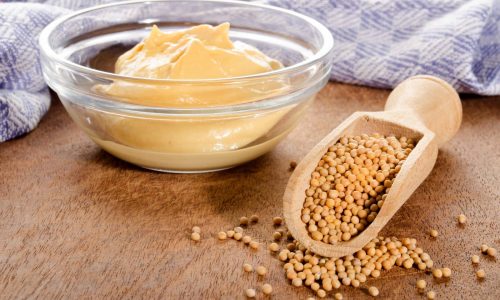
NOTE: The definitions above are only to be used as a general reference. Mustard does not have a standard of identity, and therefore there are many varieties and formulations of mustard available.
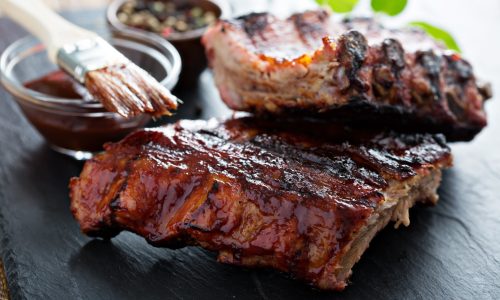
Barbecue Sauce
A thick tomato-based sauce containing a variety of spices and flavorings. Can be “hot”, smoky or sweet.
Ketchup *
Catsup, ketchup, or catchup is a thick tomato-based sauce with the addition of salt, sugar, vinegar and spices.
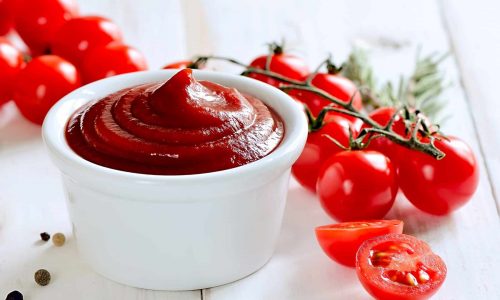

Cocktail Sauce
A sauce similar to ketchup. Less sweetener is used and more pepper spices are added in the form of fresh red peppers, crushed and ground sweet peppers, paprika or cayenne. Horseradish and/or chili sauce may also be part of the formula.
Horseradish (Prepared)
The basic formula is ground and/or disintegrated horseradish root mixed with distilled vinegar to stabilize the “heat”. Spices and other ingredients such as salt, sugar, cream or vegetable oil may then be added to this mixture. A number of horseradish products are available including cream-style prepared horseradish, horseradish sauce and beet horseradish. Horseradish is also used as an ingredient in cocktail sauce, specialty mustards, and many other products.
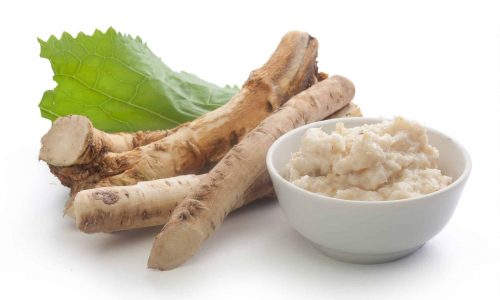

Horseradish Sauce
A mayonnaise- or cream-based sauce with added horseradish (or other heat sources), spices and other ingredients which may include sugar, salt, garlic and onion.
Dehydrated Horseradish
A dry powder derived from horseradish root.
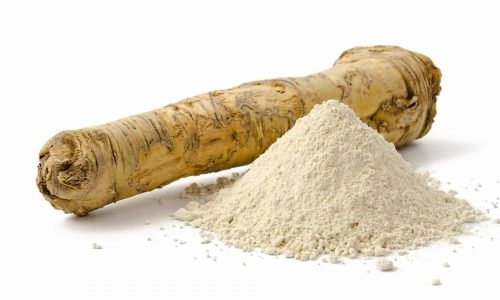
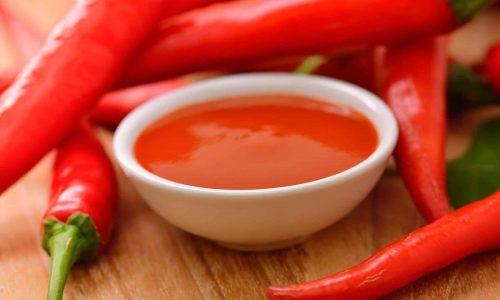
Picante Sauce and Salsa
A group of traditionally spicy sauces that may consist of tomatoes, peppers, onions, salt, sugar, garlic and herbs and spices such as oregano, cilantro and basil. While there is no standard of identity for these products, the generally accepted view is that picantes are thinner with fewer particulates than salsas. Salsas will normally be composed of large pieces in a thicker base.
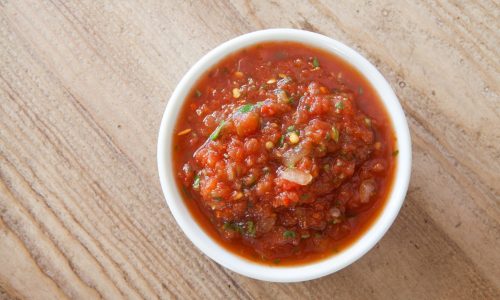

Taco Sauce
An easily pourable tomato sauce flavored by hot red chili peppers, green pepper, onion, vinegar, salt, and garlic. Can range from “mild” to “hot” varieties.
Steak Sauce
A thick, slightly sweet-tasting tomato sauce, or often with the distinctive flavor of fruit such as raisin and/or orange, plus herbs and such spices as garlic and onions.

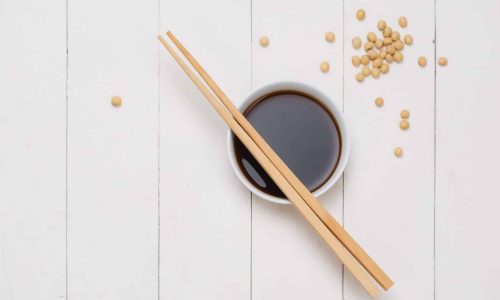
Soy Sauce
A soybean and wheat protein extract combined with water and salt. May be processed by fermentation or chemical hydrolysis.
Worcestershire
A thin, spicy dark brown sauce which may include cider vinegar, malt vinegar, anchovies, onions, soy sauce, molasses and other ingredients resulting in a slightly sweeter taste than soy sauce.
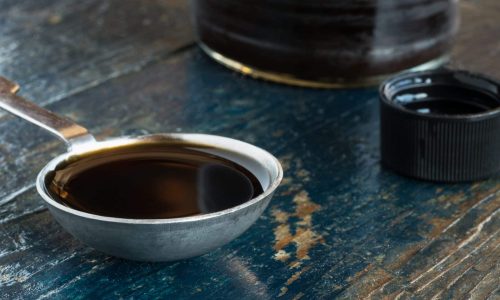
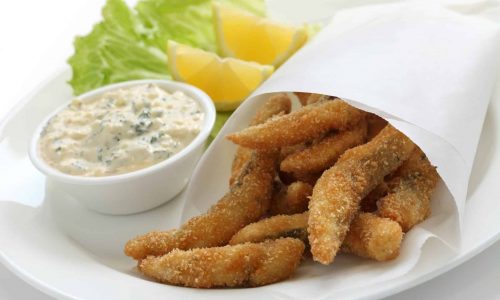
Tartar Sauce
A mayonnaise or salad dressing-based sauce with added pickle relish and possibly chopped capers.
The Grand Sauces
Demi-glace, velouté, béchamel, tomato, and hollandaise – were once referred to as the mother sauces, to indicate that from these basic sauces many others were created. Although they may not be relied upon as heavily as in years past, the grand sauces are still important in a contemporary kitchen.
Demi-Glace
Based on a brown veal stock, a demi-glace should have the flavor of roasted veal. In color, it will be a deep brown color, translucent and highly glossy. The flavor will be full, and rich with a pleasant roasted or caramel aroma.
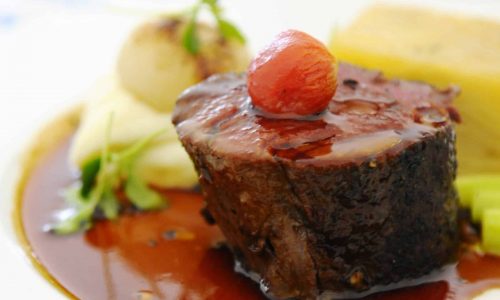

Velouté
As a velouté is based on veal, chicken or fish stock, it’s flavor will reflect the stock used in its preparation. It is pale in color, almost ivory, translucent with a definite sheen. Made with a roux, a slight hint of nuttiness may be detected, but will have the aroma of it’s base stock.
Béchamel
Originally béchamel called for an amount of lean veal, however, modern practice rarely includes it. A white sauce made by thickening milk with a white roux and simmering with aromatics, a béchamel will have a creamy flavor, reflecting its base liquid of milk. It is the color of heavy cream, slightly off-white, opaque with a definite sheen and has the aroma of cream with a slight nuttiness.


Tomato
The tomato sauce is slightly coarser than any other of the grand sauces because of the degree of texture that remains even after pureeing and straining tomatoes. The sauce will have a deep, rich tomato flavor, with no trace of bitterness or acidity, yet not overly sweet. There will be hints of supporting flavors from the stock and aromatics. Tomato sauce will have a clear tomato smell with no sour, acid, bitter or overly sweet (caramel) aromas.
Hollandaise
A hollandaise is predominantly the flavor of butter, with egg yolks contributing a great deal of flavor as well. Reduction ingredients, i.e. vinegar and peppercorns, give the sauce a balanced taste, as do the lemon juice and any additional seasonings. It will be a pale lemon color, opaque, but with a luster not appearing oily. The basic sauce and its variations should have a buttery-smooth texture, almost frothy, and an aroma of good butter.
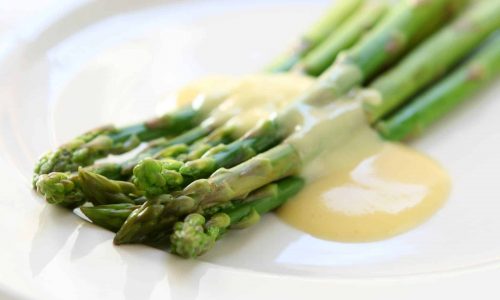
* Mayonnaise, Salad Dressing, French Dressing and Ketchup are covered by Federal Standards of Identity.
Reference: The New Professional Chef (5th Edition) by The Culinary Institute of America